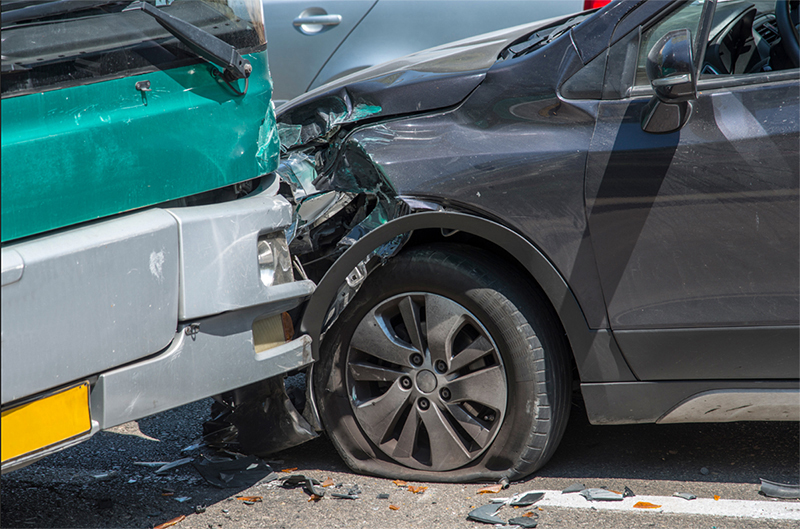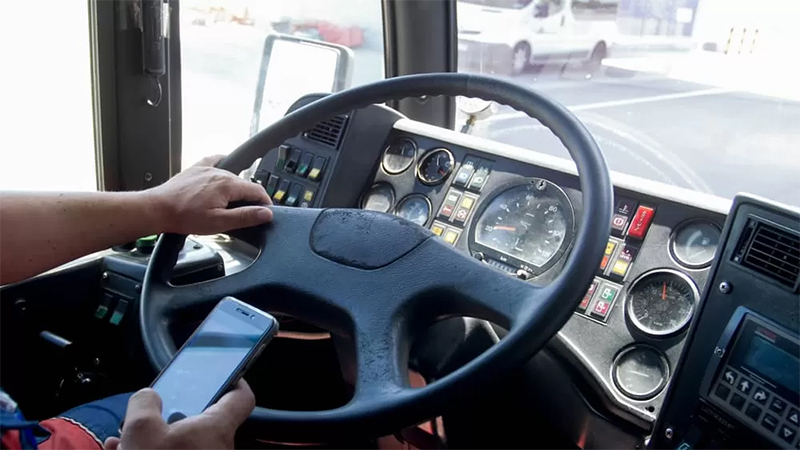Public transportation is a key part of many people’s daily routines in Oregon, providing a convenient and affordable way to commute. While the state’s public transportation system generally operates safely and efficiently, accidents involving buses can still occur.
We’ll explore the frequency of bus accidents in Oregon and dig into the factors that contribute to these incidents.
Oregon Bus Accident Statistics
Here are some general crash statistics related to bus accidents in Oregon:
- In 2021, around 250 bus accidents were reported statewide in Oregon, according to data from the Oregon Department of Transportation (ODOT). The accidents caused severe injuries to 100 individuals, and sadly, there were 2 bus fatalities. [1]
- Oregon experienced 49 more bus crashes in 2021 compared to the previous year. [1], [2]
- During 2020, there were 67 school bus crashes, resulting in 29 injuries and one fatal accident. [2]

Types of Bus Accidents in Oregon
Bus accidents in Oregon are not as common as other types of vehicle accidents, but they do still occur. Several types of bus accidents that can happen on the roads of Oregon include:
- Cyclist Accidents: Interactions between buses and cyclists, particularly involving bike lanes or intersections, can result in accidents if proper precautions and awareness are not maintained.
- Intersection Accidents: Accidents at intersections are common, especially when buses fail to yield, run red lights, or misjudge turns, leading to collisions with other vehicles or pedestrians.
- Lane Change Accidents: Improper lane changes, failure to check blind spots, or sudden maneuvers by buses can lead to accidents with vehicles in adjacent lanes.
- Overturns and Bus Rollover Accident: In rare cases, buses can overturn or roll over, especially during extreme weather conditions, sharp turns, or due to mechanical failures.
- Pedestrian Accidents: Buses are at risk for accidents with pedestrians at stops, crosswalks, or bus stations.
- Rear-End Collisions: A rear-end collision may occur when a bus crashes into the back of another vehicle. This can happen if the bus driver is following too closely or not paying attention to the traffic ahead.
- Side-Impact Collisions (T-Bone Accidents): These accidents happen when the side of a bus is struck by another vehicle, often at intersections or when one driver fails to yield, resulting in significant damage and potential injuries.
Factors Contributing to Bus Accidents in Oregon
Several contributing factors increase the risk of bus accidents in Oregon:
- Distracted Driving: Bus drivers can be distracted by various factors, such as passengers, electronic devices, or external events, leading to accidents.
- Driver Error: The most common cause of bus accidents is human error, including driver negligence, distraction, or impairment.
- Driver Fatigue: Bus drivers, especially those on long routes, may experience fatigue, affecting their alertness and reaction times.
- Inexperienced Drivers/Inadequate Training: Bus companies must ensure that their drivers are adequately trained and experienced in handling large vehicles and navigating various road conditions.
- Mechanical Failures: Faulty vehicle maintenance or equipment failures can have catastrophic consequences when buses are involved. Regular vehicle inspections and maintenance are necessary to prevent such incidents.
- Road Conditions: Poor road conditions, inadequate signage, or construction zones can contribute to bus accidents. These factors highlight the importance of ongoing road maintenance and improvements.
- Unsafe Driving Practices: Speeding, aggressive driving, reckless driving, improper lane changes, and failure to yield can all contribute to bus collisions.
- Weather Conditions: Inclement bad weather conditions, such as heavy rain, snow, or fog, can decrease visibility and make road surfaces slippery, this dangerous condition leads to increased accident risks.

Common Injuries Resulting From Bus Accidents in Oregon
Bus crashes can result in serious and catastrophic injuries due to the larger size and weight of the vehicles involved. Public transportation buses, transit buses, and school buses typically do not have seat belts, increasing the risk of injury. Injuries from bus accidents may include:
- Abrasions, Cuts, and Bruises
- Spinal Cord Injuries
- Broken Bones
- Burns
- Fatal Injuries
- Internal Injuries
- Psychological Trauma
- Soft Tissue Injuries
- Traumatic Brain Injuries (TBIs)
- Whiplash
Seek prompt medical attention after a bus accident, even if injuries appear minor, as some symptoms may not surface right away or may deteriorate over time. Consult with healthcare professionals and legal experts to comprehend and manage the physical, emotional, and financial consequences of bus accident injuries.
Who is Responsible for a Bus Accident in Oregon?
Determining liability for a bus accident in Oregon can be complex due to the involvement of multiple potentially responsible parties.
- Bus Driver: Bus drivers are responsible for ensuring the safety of their passengers through safe and attentive driving practices, following traffic laws, and maintaining a proper schedule. Negligent actions such as distracted driving, driving under the influence, and reckless operation can result in liability for the driver.
- Bus Inspectors: Bus inspectors are responsible for identifying dangerous conditions during inspections in order to prevent accidents. Inspectors in Oregon are required to ensure that both school buses and commercial buses meet the minimum legal standards for inspection, repair, and maintenance.
- Bus Manufacturer: If the accident was due to a defect in the bus or its components, such as faulty brakes or tires, the manufacturer or distributor of the defective part may be held responsible.
- Bus Owner: When a school or transportation company leases a bus, the owner may be held partially liable for accidents resulting from maintenance issues or defects.
- Employer: A bus driver may be employed by a school system or a private transportation company. Employers are accountable for the actions of a driver during the driver’s employment.
- Government Entities: If the accident was caused by a road defect, such as a pothole or malfunctioning traffic signal, the government agency responsible for maintaining the road may be liable.
- Maintenance Contractor: A maintenance contractor responsible for bus care may be held liable for accidents and injuries caused by maintenance mistakes and oversights.

If you or a loved one has been involved in a bus accident, contact Goldberg & Loren’s experienced bus accident attorneys in Oregon to ensure you receive the maximum compensation you deserve from the at-fault party.
Sources:
[1] 2021 Oregon Traffic Crash Summary . (n.d.). Oregon Department Transportation . Retrieved June 2023, from https://www.oregon.gov/odot/Data/Documents/Crash_Summary_2021.pdf
[2] 2020 OREGON TRAFFIC CRASH SUMMARY . (n.d.). Retrieved April 22, 2022, from https://www.oregon.gov/odot/Data/Documents/Crash_Summary_2020.pdf

